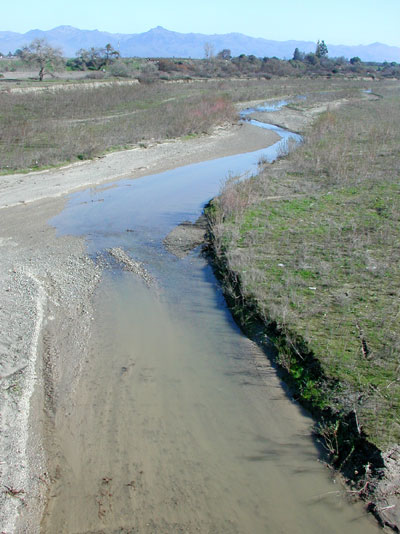San Benito County Water District Manager John Gregg said the
public should not be misled by word of El Nino weather
patterns.
San Benito County Water District Manager John Gregg said the public should not be misled by word of El Nino weather patterns because 50 percent of the time they bring droughts rather than rain.
“With El Nino weather patterns, there are no insurances for our water supply, which is why we rely more on long-term projections,” Gregg said.
Predicting water flow in San Benito County for 2003 is based on long-term weather forecasts and not El Nino weather patterns, he said.
The county received about eight inches of rain in December to add to the groundwater supply, pointing to a positive outlook for a good water supply in 2003, Gregg said. But water flows cannot be determined until the end of April, he said.
“Up to now we’re somewhere in the range of 60 percent of the area’s average rainfall,” Gregg said.
Gregg said when comparing the water flows from Jan. 6, 2002 to the same date this year indicates that rainfall flows are below the long-term average for most parts of the county.
“If we were to compare them to some of the wetter years we experienced in the mid ’90s, the system isn’t saturated,” he said. “So right after the rains, the flows drop off dramatically.”
Tres Pinos Creek water flows have dipped below normal in the last couple of days, Gregg said, and in the upper portion of the San Benito River the rainfall flows are slightly above at about 30 acre feet per day, which is enough water for eight to 10 average households for a year.
“By and large, all that water is either being diverted into the Paicines river by the water district or it’s soaking into the ground,” Gregg said.
The long-range weather forecast prepared by the National Weather Service suggests current weather patterns favor above-normal rainfall for February, March and April. “But we have to have continuing rainfall to reach our normal annual water supply,” Gregg said.
The National Oceanic and Atmospheric Administration’s Climate Prediction Center forecasts El Nino weather patterns will continue, but that doesn’t necessarily mean the El Nino’s current visit will bring the havoc of 1997-98, when San Benito County was hit with violent storms and flooding.
“It doesn’t mean we’re going to have great storms,” Gregg said. “The odds slightly favor above-normal rainfall and above-normal temperatures.”
El Nino is an eastward Pacific Ocean current. As it moves south, water temperatures rise above normal and atmospheric conditions are affected.
Characteristically, El Nino begins with subsequent months of warmer-than-normal sea surface temperatures and abnormally heavy rainfall.
NOAA reports more than 20 El Nino systems have been recorded in the last 90 years.
Gregg said summarizing how much water can be expected to soak into county land is like playing poker.
“The cards are being dealt, but until the last card is dealt you don’t make a bet,” he said. “So far, the hand looks pretty good.”
The water district recently completed its annual groundwater report, which is available for public review. A public hearing is scheduled for Monday, Jan. 13 at 7:30 p.m. at the water district offices on Mansfield Road.










